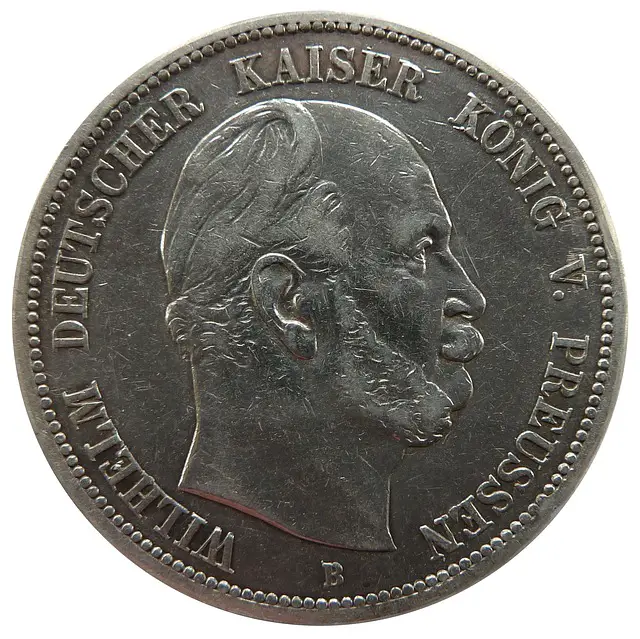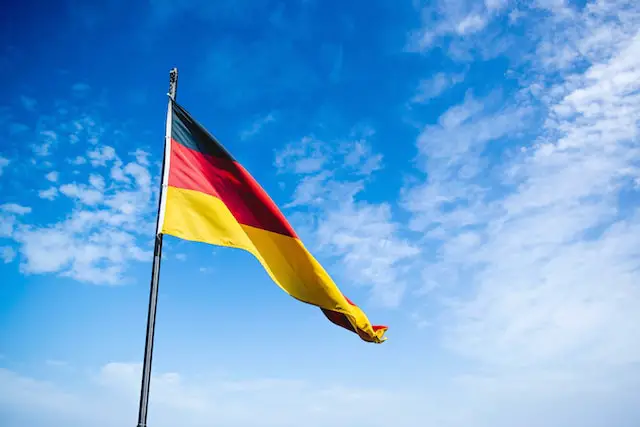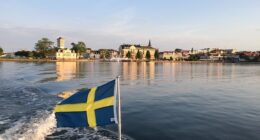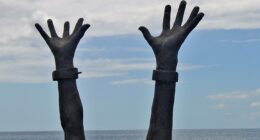While Prussia was once a powerful state that dominated Europe, it eventually became absorbed into the larger German nation in 1871. Today, Germany is known as a modern and prosperous country with a rich culture and history.
The history of Prussia?
(Image by WikimediaImages from Pixabay)

Prussia was a historically significant country in Europe, located primarily in what is now modern-day Germany. It emerged as a powerful state during the 17th century and continued to play an important role on the European stage until its abolishment after World War II.
The origins of Prussia can be traced back to the Middle Ages when it was first inhabited by Baltic tribes. However, it wasn’t until the 16th century that Prussia began to take shape as a political entity under the leadership of Albert of Brandenburg-Ansbach.
Throughout its history, Prussia underwent numerous changes in governance and territory expansion. One notable figure responsible for much of these changes was Frederick II (also known as Frederick the Great), who ruled from 1740-1786.
Under his rule, Prussia became one of Europe’s dominant powers through military conquests and territorial acquisitions. This period is often referred to as “the age of enlightenment” due to Frederick’s patronage of arts and sciences.
Despite facing defeat during World War I, Prussian militarism remained influential even after its dissolution following World War II. Today, remnants of Prussian culture can still be seen throughout Germany with landmarks such as Sanssouci Palace serving as a testament to their rich history.
The history of Germany?
(Photo by Christian Wiediger on Unsplash )

Germany has a long and complex history that dates back to the Holy Roman Empire in the Middle Ages. Over time, it evolved into a collection of smaller states, each with their own distinct culture and traditions. This diversity was at odds with efforts to create a unified German state, which led to several wars over control of the region.
In 1871, Prussian Chancellor Otto von Bismarck succeeded in unifying Germany under Prussian leadership through a series of diplomatic maneuvers and military conquests. The resulting German Empire became one of the world’s most powerful countries by the early 20th century.
However, following World War I, Germany was forced to accept blame for the conflict and pay heavy reparations as part of the Treaty of Versailles. This led to economic hardship and political instability that ultimately paved the way for Adolf Hitler’s rise to power in 1933.
Under Hitler’s regime, Germany pursued aggressive expansionist policies that eventually led to World War II. Following its defeat in 1945, Germany was occupied by Allied forces until it was divided into two separate nations: West Germany (aligned with Western Europe) and East Germany (aligned with Soviet Russia).
The fall of communism in Eastern Europe precipitated reunification between East and West Germany on October 3rd, 1990 – an event celebrated as “German Unity Day.” Today, modern-day Germany is known for its thriving economy, cultural contributions (such as Oktoberfest), soccer prowess (winning four FIFA World Cups), among other things.
Prussia Vs. Germany – Key differences
When it comes to Prussia and Germany, there are several key differences that set the two apart. Prussia was a kingdom that existed from 1701 until 1918, while Germany is a federal parliamentary republic founded in 1949.
Prussia had its own unique culture and identity separate from the rest of Germany. It was known for its militaristic tradition and emphasis on discipline and order. In contrast, modern-day Germany has embraced diversity and multiculturalism.
Another significant difference between Prussia and Germany is their political systems. While both were led by monarchs at one point in history, modern-day Germany is a democracy with an elected president as head of state.
Additionally, the borders of Prussia differed from those of modern-day Germany. At its height, Prussia included parts of Poland, Lithuania, Russia and Denmark whereas today’s German borders are limited within Europe.
These differences may seem minor but they highlight how much history can shape our identity as nations. Though no longer physically present on any map – except for some street names or monuments-Prussian culture still remains alive through literature or memories passed down over generations .
| PRUSSIA | GERMANY |
|---|---|
| Historical state in Central Europe from the 15th century to 1947 | Modern-day country located in Central Europe |
| Predominantly German-speaking, but also included non-German territories | Predominantly German-speaking nation |
| Known for its militaristic and authoritarian governance | Democratic nation with a federal parliamentary system |
| Led the process of German unification in the 19th century, becoming the core of the newly formed German Empire | Resulted from the unification of various German states in 1871 |
| Dissolved as a state after World War II and its territory divided among different countries | Reunified after the fall of the Berlin Wall in 1989 |
| Famous for influential historical figures like Frederick the Great and Otto von Bismarck | Known for its contributions to arts, sciences, and philosophy, as well as historical figures like Albert Einstein and Johann Wolfgang von Goethe |
| Existed during different eras and had varying borders | Consists of 16 states with fixed borders since reunification |
| Played a significant role in European politics and conflicts during its existence | Active member of the European Union and plays a prominent role in international affairs |
Why the two countries are often confused
Many people often confuse Prussia with Germany. This is understandable, considering their intertwined histories and the fact that they were both located in the same region of Europe. However, there are several key differences between the two countries that should be noted.
One reason for this confusion could be attributed to geography. Prussia was a kingdom established in what is now modern-day Germany, but it also had territories outside of Germany’s current borders, such as parts of Poland and Russia. Meanwhile, Germany as we know it today did not exist until 1871 when it was officially unified under Bismarck.
Another reason for the mix-up could be due to language. The official language spoken in both Prussia and modern-day Germany is German, which can lead to further confusion when discussing historical events or cultural practices associated with either country.
It’s also worth noting that Prussia played a significant role in shaping modern-day Germany through its military prowess and political influence during the 18th and 19th centuries. In many ways, Prussian culture became synonymous with German culture during this time period.
Despite these similarities and shared history between Prussia and Germany, it’s important to recognize their distinct differences in order to fully understand each country’s unique identity.
Why was Prussia so powerful?
Prussia was one of the most powerful states in Europe for centuries. But what made it so powerful? One reason was its strong military, which Prussian leaders cultivated throughout their history. This led to a reputation for discipline and efficiency that other nations admired. Additionally, Prussia’s central location gave it strategic importance as a crossroads between many major European powers.
Another factor contributing to Prussia’s power was its leadership structure. The Hohenzollern dynasty ruled over Prussia from the 1600s until the end of World War I, providing stability and continuity even during times of political upheaval. Furthermore, this dynasty invested heavily in education and infrastructure development.
Economically speaking, Prussians were known for their hard work ethic and thriftiness; they established successful industries like textiles and mining that allowed them to accumulate wealth over time.
There were many factors working together that contributed to making Prussia such a formidable force on the international stage – including geography, leadership structures, military prowess as well as cultural attitudes towards work ethic and investment into education & industry development
Why was Prussia abolished?
Prussia played a significant role in the history of Germany and Europe. However, after World War II, Prussia was officially abolished. One of the main reasons for this was the involvement of Prussia in Nazi Germany’s rise to power and subsequent atrocities committed during World War II. The Allied powers saw it as necessary to eliminate any traces of Prussian militarism and imperialism.
Another reason for abolishing Prussia was its association with authoritarianism and repression. Many people were opposed to the idea of having a monarchy ruling over them, especially one that had been responsible for so much bloodshed throughout European history.
Furthermore, there were concerns about how Prussian nationalism could be used to fuel future conflicts within Europe. By getting rid of Prussia altogether, it was hoped that these tensions would be reduced or eliminated entirely.
Despite being abolished on paper, however, some argue that the spirit of Prussian militarism still exists today in German society – particularly within certain political movements or factions that glorify past military conquests or nationalist ideals.
Why didn’t Austria join Germany?
Many people wonder why Austria did not join Germany, considering their similar cultures and languages. However, the answer is quite complex and rooted in historical events.
We must remember that Austria was once a powerful empire in its own right. It held significant territories across Europe, including modern-day Hungary and parts of Italy. The Austrian leaders were hesitant to give up this power and become subservient to another country.
There were political tensions between the two nations. The unification of Germany had been led by Prussia rather than Austria, creating some resentment from the Austrian side.
Additionally, many German nationalists believed in the concept of “Greater Germany,” which included all German-speaking territories such as Austria. However, this idea was opposed by those who believed in a “Lesser Germany” which excluded Austria.
It’s important to note that other European powers at the time were also opposed to an alliance between these two nations. They feared that a united front would be too powerful and could upset the balance of power on the continent.
While there were certainly cultural similarities between Austria and Germany, various political factors prevented them from joining together into one nation as many may have hoped for or expected.
Featured Image By – Christian Lue on Unsplash








